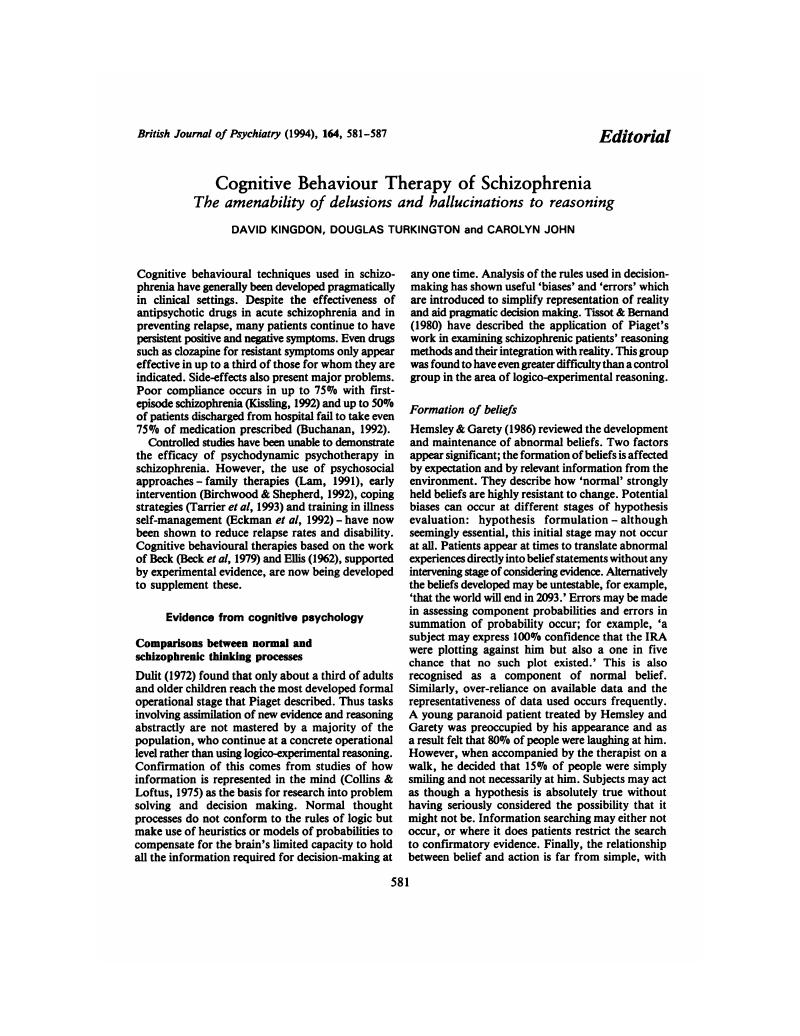Crossref Citations
This article has been cited by the following publications. This list is generated based on data provided by Crossref.
Ormrod, John
and
Jones, Sally
1992.
A therapy employing a Q-sort task with a woman hearing voices.
Clinical Psychology Forum,
Vol. 1,
Issue. 44,
p.
13.
Bentall, Richard P.
and
Day, Jennifer C.
1994.
Psychological factors and neuroleptic therapy: Some neglected issues.
International Review of Psychiatry,
Vol. 6,
Issue. 2-3,
p.
217.
Gary, J. Remington
1995.
The Long-Term Treatment of Schizophrenia.
The Canadian Journal of Psychiatry,
Vol. 40,
Issue. 3_suppl,
p.
3.
Tarrier, Nicholas
and
Barrowclough, Christine
1995.
Family Interventions in Schizophrenia and Their Long-term Outcomes.
International Journal of Mental Health,
Vol. 24,
Issue. 3,
p.
38.
Drayton, Michael
1995.
The emotional impact of schizophrenia.
Clinical Psychology Forum,
Vol. 1,
Issue. 82,
p.
15.
Gournay, Kevin
1995.
Mental health nurses working purposefully with people with serious and enduring mental illness—an international perspective.
International Journal of Nursing Studies,
Vol. 32,
Issue. 4,
p.
341.
Kane, J.M.
and
McGlashan, T.H.
1995.
Treatment of schizophrenia.
The Lancet,
Vol. 346,
Issue. 8978,
p.
820.
Borell, Per
1995.
Beteendeterapeutisk behandling vid schizofreni.
Scandinavian Journal of Behaviour Therapy,
Vol. 24,
Issue. 2-3,
p.
45.
Morrison, Anthony P.
Haddock, Gillian
and
Tarrier, Nicholas
1995.
Intrusive Thoughts and Auditory Hallucinations: A Cognitive Approach.
Behavioural and Cognitive Psychotherapy,
Vol. 23,
Issue. 3,
p.
265.
Ramsay, Rosalind
and
Fahy, Tom
1996.
Mental Health Matters: A Reader.
p.
290.
Kemp, Roisin
David, Anthony
and
Hayward, Peter
1996.
Compliance Therapy: An Intervention Targeting Insight and Treatment Adherence in Psychotic Patients.
Behavioural and Cognitive Psychotherapy,
Vol. 24,
Issue. 4,
p.
331.
Warnes, Ann
Strathdee, Geraldine
and
Bhui, Kamaldeep
1996.
On learning from the patient: hearing voices.
Psychiatric Bulletin,
Vol. 20,
Issue. 8,
p.
490.
Kuperberg, GR
and
Murray, R
1996.
ADVANCES IN THE TREATMENT OF SCHIZOPHRENIA.
International Journal of Clinical Practice,
Vol. 50,
Issue. 6,
p.
315.
Duff, Annette
1996.
Case study of a female client on a regional secure unit.
Journal of Advanced Nursing,
Vol. 23,
Issue. 4,
p.
771.
Pantelis, Christos
and
Barnes, Thomas R.E.
1996.
Drug Strategies and Treatment-Resistant Schizophrenia.
Australian & New Zealand Journal of Psychiatry,
Vol. 30,
Issue. 1,
p.
20.
Rakfeldt, Jaak
and
McGlashan, Thomas H.
1996.
Onset, course, and outcome of schizophrenia.
Current Opinion in Psychiatry,
Vol. 9,
Issue. 1,
p.
73.
Tillett, Richard
1996.
Psychotherapy Assessment and Treatment Selection.
British Journal of Psychiatry,
Vol. 168,
Issue. 1,
p.
10.
Sharp, Helen M.
Fear, Christopher F.
Williams, J.Mark G.
Healy, David
Lowe, C.Fergus
Yeadon, Hilary
and
Holden, Robin
1996.
Delusional phenomenology—Dimensions of change.
Behaviour Research and Therapy,
Vol. 34,
Issue. 2,
p.
123.
Hahlweg, Kurt
1996.
Lehrbuch der Verhaltenstherapie.
p.
255.
Bouchard, Stéphane
Vallières, Annie
Roy, Marc-André
and
Maziade, Michel
1996.
Cognitive restructuring in the treatment of psychotic symptoms in schizophrenia: A critical analysis.
Behavior Therapy,
Vol. 27,
Issue. 2,
p.
257.






eLetters
No eLetters have been published for this article.